So, you’ve made the daunting yet courageous decision to lose weight. Many of us will ponder this thought at some point in our lives. Firstly, I’d like to congratulate you on choosing to improve your health. Unfortunately, making this decision is the easiest part of your weight loss journey.
Implementing a fool-proof plan and being persistent with it tends to be slightly more difficult. Losing weight is far from easy, however many have done it before you and many will do it after you.
So, you’re taking Orlistat to give you a helping hand in your weight loss journey, but you are unsure exactly how to modify your diet appropriately to achieve the best results. Well, I’m going to tell you exactly what you’ll need to do to get the ball rolling, and no I’m not talking about the exercise ball (although, that may help too). Right then, together we shall commence on our weight loss journey, hold on tight it’s going to be a bumpy ride.
First of all, let’s discuss orlistat alone as a drug, then we can move on to the exciting part you’ve all been waiting for… DIET!
What is Orlistat?
Orlistat is a drug used in obesity to enhance weight loss. Its mechanisms of action consist of inhibiting enzymes known as lipases present in the gut. These enzymes break down the fat we consume in our diets in a process called digestion. When these enzymes are inhibited, approximately one-third of the fat we consume cannot be broken down and absorbed as done in the normal process of fat digestion. Consequently, the undigested dietary fat is excreted in the stools resulting in reduced weight gain.
Single-handedly, orlistat will result in a moderate reduction in weight. In other words, orlistat use must be accompanied by everybody’s two best friends: diet and exercise. I know this isn’t exactly what you want to hear, but ultimately in order to lose weight in a healthy and safe way, one must make changes to their diet and exercise sufficiently. Making healthy lifestyle changes is imperative to achieve the best results. Will it be easy? Not necessarily. Will it be worth it? Absolutely! So, if you need to lose weight in order to avoid health complications, orlistat accompanied with healthy lifestyle changes is the answer!
There are some unpleasant side effects associated with the initial use of orlistat however following prolonged use, the side effects tend to subside. See below:
- Increased urgency when emptying bowels
- flatulence
- loose, oily stools
- oily residue
Now, before you abort ship, I must advise you these symptoms are not likely to be too troublesome if fat consumption is controlled effectively. This does not mean you must cut all fat out of your diet. Rather, you must adjust and maintain your fat consumption at a level of around 30% of your overall food intake. You can find out more information on how to control your fat consumption under the fat subheading below. Although unpleasant, these initial side effects do not outweigh the health benefits associated with using orlistat and subsequent weight loss. This little fat buster is a great way to ensure success on your journey, however, diet and exercise is a must!
Orlistat
£53.00 – £120.00
Orlistat has been proven to help patients lose weight in clinical trials. Orlistat is the generic, non-branded form of Xenical, and is therefore better value for money. Both medicines have exactly the same effectiveness.
SKU: N/A
Description
What Is Orlistat?
Orlistat can be used to help with weight loss. Rather than being an appetite suppressant it stops your body from absorbing the fat from food. This process helps the body to lose weight. Orlistat is not a single solution and should be used with a sensible calorie controlled diet.
Orlistat blocks approximately 1/3 of the fat from your food by attaching to enzymes in the digestive system and stopping them from breaking down the fat content of your food. The undigested fat is simply passed through your system.
How to Take Orlistat
The recommended dose of Orlistat is a 120-mg capsule taken with water with each meal that contains fat. You should take Orlistat up to three times a day in conjunction with a reduced-calorie diet. Each time you take Orlistat , your nutritionally balanced meal should contain no more than about 30% of calories from fat.
You should evenly divide your daily intake of fat, carbohydrates and protein over three main meals. Take Orlistat during meals or up to 1 hour after a meal. If you occasionally miss a meal or have a meal without fat, you can omit your dose of Orlistat . Doses above 120 mg three times daily have not been shown to provide an additional weight-loss benefit.
You should try to follow a healthy eating plan, such as one from which no more than 30% of calories come from fat. Following this eating plan will help you lose weight while decreasing some of the possible gastrointestinal effects you may experience while taking Orlistat . You may also need to adjust your calorie intake and/or your activity level, including reasonable exercise.
If your meal contains too much fat, you may experience diarrhoea. In the case of bloody stools, discontinue use and seek medical advice.
Vitamin Supplements
Because Orlistat interferes with your body’s absorption of some fat-soluble vitamins, you should take a daily multivitamin supplement that contains vitamins A, D, E and K and beta carotene once a day at least 2 hours before or after taking Orlistat , such as at bedtime
Patient Information Leaflet
Always read the patient information leaflet before commencing treatment. Patient information can be found here.
Exercise

Let’s start with exercise. In order to shed the pounds, you must exercise sufficiently, 30 minutes a day to start, at least 5 days a week. The big secret to weight loss is not so much a secret at all. You must burn off more calories through physical activity than you consume. It really is that simple! Exercising sufficiently results in your body utilising its fat stores as a source of energy. This results in weight loss. Understanding the mechanism of weight loss is not so much the difficult part. Having the discipline to eat healthily along with the motivation to exercise regularly can prove to be quite hard. So, in order to lose the pounds, you must incorporate more exercise into your daily routine. This could be taking the stairs rather than the lift or enduring a hardcore cardio session at the gym. Just get your body moving! Now let’s talk about how to diet when using Orlistat.
Diet
Diet often proves to be the defeating factor of weight loss as it accounts for a massive 90% of the battle, in comparison to a measly 10% as a result of exercise. For this reason, it’s very important you understand what you should/should not be eating. The ability to sustain a healthy diet can be immensely hard and even psychologically challenging! Those of you that have dabbled in the strenuous battle of weight loss will be well familiar with the intense cravings for a cheeky chocolate bar associated with dieting.
Step one is to identify your biggest unhealthy food weaknesses and either avoid them at all costs or reduce them significantly replacing them with healthy alternatives. It is ok to leave some higher calorie foods for ‘cheat days’, however, this must be done in moderation ensuring cheat days do no turn into ‘cheat weeks’!
Perhaps you’re seduced by a beautifully pr epared burger. The patty christened on a delightfully light seeded bun, laced with mayo and ketchup; topped with the finest mature cheddar one could ever wish for! This then washed down by diving into a diabetes fuelled pool of fizzy pop. Facing this predicament can entice even the strongest-minded individual to surrender to defeat, and indulge in a cholesterol-filled pit. Delicious I know, but perhaps we can take a different approach? Surely if we minus the meat, bread, sauce and cheese, you’re left with the deliciously crispy lettuce and sweet, juicy tomato, which is basically just as satisfying to one’s cravings right? Ok, perhaps not… The point I’m trying to make is the first step in dieting is altering your meal choices and avoiding predicaments of relapsing failures! If unhealthy food is not present to taunt you from your fridge, it cannot be eaten, can it? Be sensible with your grocery choices!
epared burger. The patty christened on a delightfully light seeded bun, laced with mayo and ketchup; topped with the finest mature cheddar one could ever wish for! This then washed down by diving into a diabetes fuelled pool of fizzy pop. Facing this predicament can entice even the strongest-minded individual to surrender to defeat, and indulge in a cholesterol-filled pit. Delicious I know, but perhaps we can take a different approach? Surely if we minus the meat, bread, sauce and cheese, you’re left with the deliciously crispy lettuce and sweet, juicy tomato, which is basically just as satisfying to one’s cravings right? Ok, perhaps not… The point I’m trying to make is the first step in dieting is altering your meal choices and avoiding predicaments of relapsing failures! If unhealthy food is not present to taunt you from your fridge, it cannot be eaten, can it? Be sensible with your grocery choices!
How To Diet When Using Orlistat
Writing down what you eat is a good way of keeping a tab of your food consumption. This allows you to identify and alter any bad habits. Losing weight does not necessarily mean cutting out a majority of your food intake as many people may think. It is about ensuring the food you do eat is healthy and nutritious. This does not mean you must live of carrots and broccoli as exciting as this idea may sound. You do however have to consume a sufficient amount of the vital macronutrients we call fats, carbohydrates and protein, in order to maintain a healthy balanced diet.
Carbohydrates & Fibre
In an ideal orlistat diet, carbohydrates should account for a large proportion of your energy intake. Starchy carbohydrates, particularly whole grain varieties (e.g. whole grain cereals and bread, brown rice and brown pasta) tend to be more satiating.
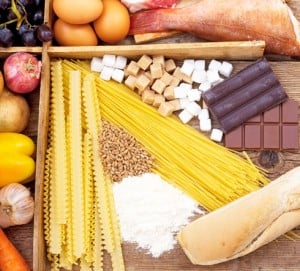 Another perk of carbohydrate consumption is fibre. Fibre is found in foods originating from plants. A good source of fibre can be obtained from various carbohydrates rich foods such as fruit and vegetables. Sufficient fibre intake can reduce weight gain and is imperative to ensure your digestive system works at its optimum ability. Fibre can also reduce the risk of long-term health complications associated with obesity such as heart disease and Type 2 diabetes.
Another perk of carbohydrate consumption is fibre. Fibre is found in foods originating from plants. A good source of fibre can be obtained from various carbohydrates rich foods such as fruit and vegetables. Sufficient fibre intake can reduce weight gain and is imperative to ensure your digestive system works at its optimum ability. Fibre can also reduce the risk of long-term health complications associated with obesity such as heart disease and Type 2 diabetes.
There are two types of fibre- soluble and insoluble. The soluble form of fibre is thought to decrease blood cholesterol levels by binding to cholesterol in the gut. Insoluble fibre regulates the digestive system and prevents constipation. The benefits don’t stop there! The ability of the fibre to emulate feelings of fullness owed to slowed digestion is beneficial in reducing overeating. Consuming 5 fruits and vegetables each day has long been recommended by healthcare professionals. You should aim for about 50% of your meal portions to consist of vegetables/salad.
See below foods rich in good carbohydrates:
Starchy carbohydrates
- Potato
- Rice
- Bread
- Cereals
- Pasta
Carbohydrates rich in fibre
- Beans
- Cereals (bran varieties)
- Wholemeal food varieties
- Fruit
- Vegetables
- porridge
Sugar
I must warn you, carbs are not the be all and end all!
Beware of the bad carbs lurking in the waters. Added sugar is a big no-no! Added sugar in your diet, whether this is in the manufacturing process or adding table sugar is a terrible idea if you are trying to lose weight! Indulging in bad carbs will induce weight gain. You must avoid processed sugary carbohydrates i.e. sweets, pastries, fizzy drinks and cakes etc. Ensure you check the sugar content of the food you are buying and always go for less added sugar varieties. If like me you need a kick of sweetness in your daily coffee/tea fix to get you through the day, substitute added sugar with a healthier alternative like a sweetener instead and ensure you’re using low-fat dairy products like skimmed or semi-skimmed milk rather than full fat.
This brings me on to our next macronutrient, FAT!
Fat
In order to avoid the unpleasant side effects associated with orlistat use, it is important you adjust your fat intake accordingly. Fat consumption must be maintained at a level of around 30% of your overall food intake.
 Many of the important vitamins we need (A, D, E, K and beta-carotene) require the presence of fat in order to be utilised by our bodies. As the nature of orlistat affects fat absorption, consequently vitamin absorption is also affected. For this reason, when taking orlistat you should also take a multivitamin supplement to ensure essential vitamin levels are maintained. Multivitamin supplements should not be taken at the same time as orlistat but taken once a day before bed. Multivitamins can be found via the following link (if applicable).
Many of the important vitamins we need (A, D, E, K and beta-carotene) require the presence of fat in order to be utilised by our bodies. As the nature of orlistat affects fat absorption, consequently vitamin absorption is also affected. For this reason, when taking orlistat you should also take a multivitamin supplement to ensure essential vitamin levels are maintained. Multivitamin supplements should not be taken at the same time as orlistat but taken once a day before bed. Multivitamins can be found via the following link (if applicable).
How do I control my fat consumption?
Many foods, for example, dairy products, contain a high-fat content. It’s always wise to go for ‘less fat’ varieties. It’s also important to monitor your portion sizes. There is no use having reduced fat cheese if you’re going to eat a portion the size of your fist! Keep your portion sizes sensible and controlled (in the case of cheese around 1 oz).
How do I decrease my fat intake?
- Use low-fat butter/spreads
- Avoid mayonnaise and high-fat salad dressings
- Use lean cuts of meat, removing visible fat and skin
- Avoid added fat in preparation methods i.e. frying in oils/fat
- Use low-fat dairy product i.e. yoghurts, milk and cheese
- Avoid chocolate, peanut butter, crisps, cakes, pastries etc.
Protein
Lean meat and fish provide a rich source of protein and should account for around 25% of your meal portions. Any visible fat should be removed and skin should be discarded as it’s highly condensed with saturated fat. Not good! White meat and seafood are best for healthy and filling protein options as they tend to be lower in fat. Lean cuts of red meat are also acceptable options but contain a higher fat content. Cooking methods must also be taken into consideration.
It is best to use preparation methods of grilling, steaming or roasting, avoiding cooking methods that add fat like frying for example. You can obtain a good source of protein from vegetables too. Fruits also provide a source of protein but to a lesser extent. Some examples of vegetables rich in protein include soybeans, broccoli and lentils.
Alcohol
Many people are unaware of the calories contained in alcoholic beverages. This is something you must be cautious of if you’re someone that likes to a have a cheeky drink each evening after a hard day or perhaps more of an adventurous binge on the weekend after a stressful week. Remember, no more than 14 units of alcohol should be consumed a week for both men and women.
Food labels
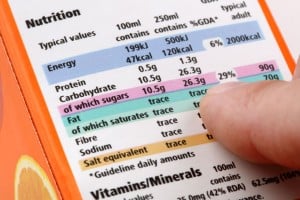 When shopping for food, you must acquire the ability to strategically choose the best food options for your orlistat diet. You must become a food critique, learning to differentiate between highly nutritious foods versus the poisons we often stuff our faces with. You may find this to be difficult, to begin with, and your shopping trips may be slightly longer at first, but soon you will be able to filter out the healthy products with the help of food labels, which can often be bamboozling!
When shopping for food, you must acquire the ability to strategically choose the best food options for your orlistat diet. You must become a food critique, learning to differentiate between highly nutritious foods versus the poisons we often stuff our faces with. You may find this to be difficult, to begin with, and your shopping trips may be slightly longer at first, but soon you will be able to filter out the healthy products with the help of food labels, which can often be bamboozling!
Being on an orlistat diet means your fat consumption must be tightly controlled. You must examine food labels to see the fat content of what you’re eating. When examining food labels, take note of the ‘total fat’ content of the products you are buying. This is the section we are most interested in and determines the occurrence of the unpleasant side effects associated with orlistat use. Nutritional content labels are often presented in tables found on the side or back of food products. The information is usually presented as either ‘per portion’ or ‘per 100g’ reference guides. Ideally, we want the fat content to be 3g per 100g or less (however, 5g or less is also acceptable).
Information on the following nutritional constituents is usually provided. See below.
- Energy kJ/Kcal (referring to calories)
- Fat
- Saturates (saturated fat)
- Carbohydrate
- Sugar
- Protein
- Salt
Information is also often displayed on the front of packaged food giving a quick summary of the nutritional content. This is often colour coded with the green, amber and red colour scheme:
- Red- High content
- Amber- medium content
- Green- Low content
This provides an easy to understand summary of the nutritional content of the product. The overall message being: go for greens! These foods are healthier options. Reds should be avoided as they contain a high content of either fat, sugar or salt and hence more calories being detrimental in dieting. If despite this information you still chose to go for red labels, they must be eaten at your own risk in moderation.
The last thing to keep an eye out for is the ingredient list. Ingredients are listed in order of the highest content. That is to say, if the first few ingredients listed are high in fat, sugar or salt, this suggests the product is an unhealthy option, so put it down and keep it moving!
Being overweight is linked to an increased risk o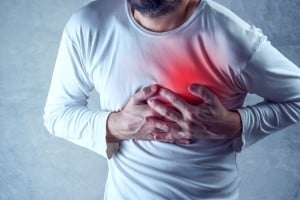 f numerous health condition such as heart disease and stroke, diabetes, osteoarthritis and even some cancers. Ultimately, only you can control the food that you consume. Educating yourself will give you the ability to make informed decisions on the best foods to nourish your body with. This is imperative in becoming a healthier and subsequently happier, more energised individual. You now have knowledge on how to successfully plan your meals effectively in order to maintain a healthy, balanced diet. I will now leave you to continue your weight loss journey alone. I wish you the best of luck on your journey, and hope you achieve your end goal! Happy dieting!
f numerous health condition such as heart disease and stroke, diabetes, osteoarthritis and even some cancers. Ultimately, only you can control the food that you consume. Educating yourself will give you the ability to make informed decisions on the best foods to nourish your body with. This is imperative in becoming a healthier and subsequently happier, more energised individual. You now have knowledge on how to successfully plan your meals effectively in order to maintain a healthy, balanced diet. I will now leave you to continue your weight loss journey alone. I wish you the best of luck on your journey, and hope you achieve your end goal! Happy dieting!
Top Ten Tips
- Eat regularly with 3 main balanced meals (eating slowly and chewing food properly will make you feel fuller).
- Keep healthy snacks in arms reach to avoid naughty snacking spurs between meals (e.g. fruits, carrot sticks etc.)
- Decrease portion sizes.
- Eat plenty of fruits and vegetables.
- Drink plenty of water- often the feeling of thirst is confused with feelings of hunger. Keep yourself hydrated drinking around 2 litres of water a day to prevent unnecessary overeating.
- Be picky with your food choices and always read the labels.
- Decrease your fat consumption!
- Be prepared for fluctuations in weight, nobody is perfect!
- Increase physical activity and get your body moving.
- Be consistent and stay motivated!
References
- https://www.fda.gov/drugs/drugsafety/postmarketdrugsafetyinformationforpatientsandproviders/ucm180076.htm
- https://www.accessdata.fda.gov/drugsatfda_docs/label/2007/021887lbl.pdf
- https://www.myalli.com/
- https://www.accessdata.fda.gov/drugsatfda_docs/label/2009/020766s026lbl.pdf
- https://www.accessdata.fda.gov/drugsatfda_docs/appletter/2010/020766s028ltr.pdf
- https://www.medicines.org.uk/emc/medicine/21670
- https://www.medicines.org.uk/emc/PIL.21736.latest.pd
- https://www.bda.uk.com/foodfacts/Carbs.pdf
- https://www.bda.uk.com/foodfacts/FatFacts.pdf
- https://www.bda.uk.com/foodfacts/fibrefoodfactsheet.pdf
- https://www.bda.uk.com/foodfacts/wholegrains.pdf
- https://www.bda.uk.com/foodfacts/Alcohol.pdf
- https://www.bda.uk.com/foodfacts/HealthyEating.pdf
- https://www.bda.uk.com/foodfacts/labelling.pdf
Assured Pharmacy is not liable for the currency or accuracy of the information contained in this blog post. For specific information about your personal medical condition, please contact our doctors or pharmacists for advice on [email protected].

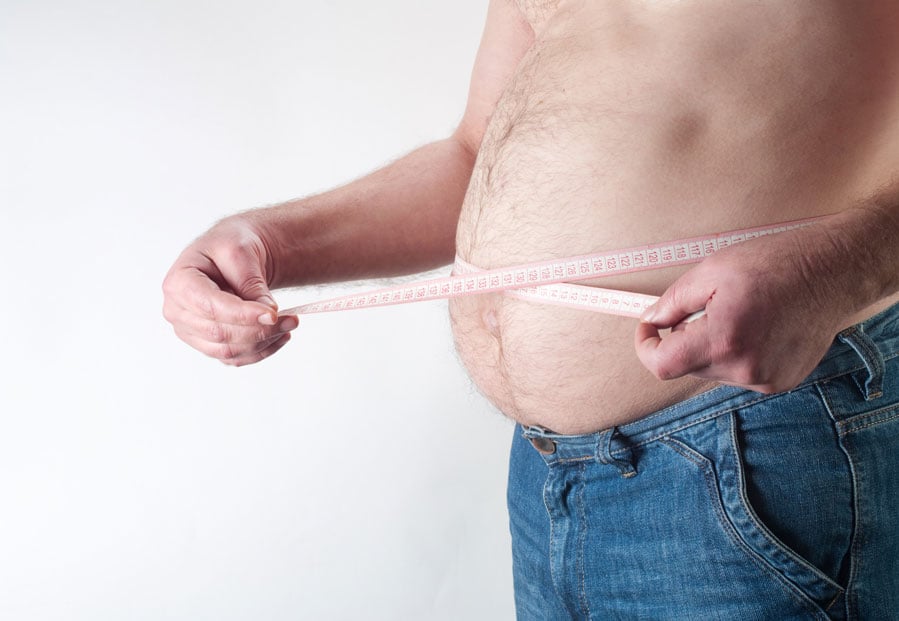



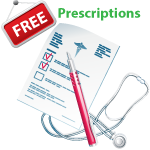



 epared burger. The patty christened on a delightfully light seeded bun, laced with mayo and ketchup; topped with the finest mature cheddar one could ever wish for! This then washed down by diving into a diabetes fuelled pool of fizzy pop. Facing this predicament can entice even the strongest-minded individual to surrender to defeat, and indulge in a cholesterol-filled pit. Delicious I know, but perhaps we can take a different approach? Surely if we minus the meat, bread, sauce and cheese, you’re left with the deliciously crispy lettuce and sweet, juicy tomato, which is basically just as satisfying to one’s cravings right? Ok, perhaps not… The point I’m trying to make is the first step in dieting is altering your meal choices and avoiding predicaments of relapsing failures! If unhealthy food is not present to taunt you from your fridge, it cannot be eaten, can it? Be sensible with your grocery choices!
epared burger. The patty christened on a delightfully light seeded bun, laced with mayo and ketchup; topped with the finest mature cheddar one could ever wish for! This then washed down by diving into a diabetes fuelled pool of fizzy pop. Facing this predicament can entice even the strongest-minded individual to surrender to defeat, and indulge in a cholesterol-filled pit. Delicious I know, but perhaps we can take a different approach? Surely if we minus the meat, bread, sauce and cheese, you’re left with the deliciously crispy lettuce and sweet, juicy tomato, which is basically just as satisfying to one’s cravings right? Ok, perhaps not… The point I’m trying to make is the first step in dieting is altering your meal choices and avoiding predicaments of relapsing failures! If unhealthy food is not present to taunt you from your fridge, it cannot be eaten, can it? Be sensible with your grocery choices!
 Many of the important vitamins we need (A, D, E, K and beta-carotene) require the presence of fat in order to be utilised by our bodies. As the nature of orlistat affects fat absorption, consequently vitamin absorption is also affected. For this reason, when taking orlistat you should also take a multivitamin supplement to ensure essential vitamin levels are maintained. Multivitamin supplements should not be taken at the same time as orlistat but taken once a day before bed. Multivitamins can be found via the following link (if applicable).
Many of the important vitamins we need (A, D, E, K and beta-carotene) require the presence of fat in order to be utilised by our bodies. As the nature of orlistat affects fat absorption, consequently vitamin absorption is also affected. For this reason, when taking orlistat you should also take a multivitamin supplement to ensure essential vitamin levels are maintained. Multivitamin supplements should not be taken at the same time as orlistat but taken once a day before bed. Multivitamins can be found via the following link (if applicable).
 f numerous health condition such as heart disease and stroke, diabetes, osteoarthritis and even some cancers. Ultimately, only you can control the food that you consume. Educating yourself will give you the ability to make informed decisions on the best foods to nourish your body with. This is imperative in becoming a healthier and subsequently happier, more energised individual. You now have knowledge on how to successfully plan your meals effectively in order to maintain a healthy, balanced diet. I will now leave you to continue your weight loss journey alone. I wish you the best of luck on your journey, and hope you achieve your end goal! Happy dieting!
f numerous health condition such as heart disease and stroke, diabetes, osteoarthritis and even some cancers. Ultimately, only you can control the food that you consume. Educating yourself will give you the ability to make informed decisions on the best foods to nourish your body with. This is imperative in becoming a healthier and subsequently happier, more energised individual. You now have knowledge on how to successfully plan your meals effectively in order to maintain a healthy, balanced diet. I will now leave you to continue your weight loss journey alone. I wish you the best of luck on your journey, and hope you achieve your end goal! Happy dieting!
Reviews
There are no reviews yet.